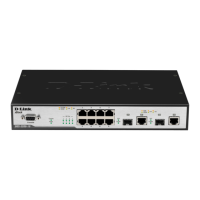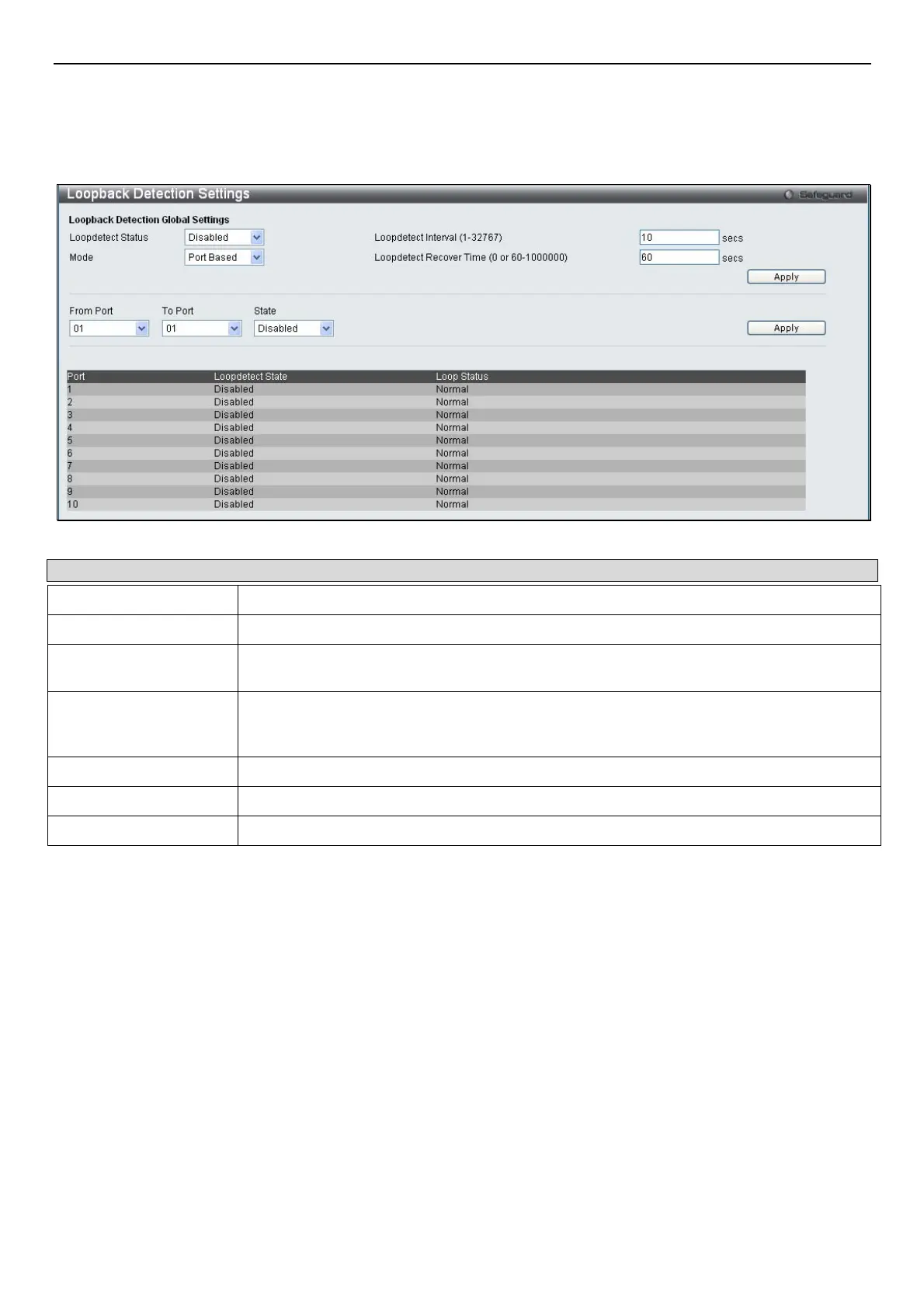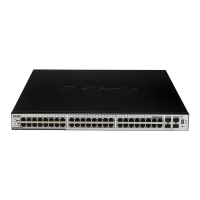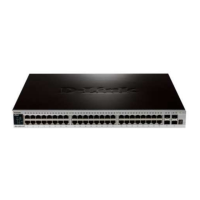DGS-3200 Series Layer 2 Gigabit Ethernet Managed Switch
95
Loopback Detection Settings
The Loopback Detection function is used to detect the loop created by a specific port.
To view the Loopback Detection Settings window, click Loopback Detection Settings in the L2 Features folder.
Figure 7- 25. Loopback Detection Settings window
Parameter Description
Loopdetect Status
Use the drop-down menu to enable or disable loopback detection. The default is Disabled.
Mode
Use the drop-down menu to toggle between Port Based and VLAN Based.
Loopdetect Interval (1-
32767)
Set a Loopdetect Interval between 1 and 32767 seconds. The default is 10 seconds.
Loopdetect Recover
Time (0 or 60-1000000)
Time allowed (in seconds) for recovery when a Loopback is detected. The Loopdetect
Recover Time can be set at 0 seconds, or 60 to 1000000 seconds. Entering 0 will disable
the Loopdetect Recover Time. The default is 60 seconds.
From Port
Use the drop-down menu to select a beginning port number.
To Port
Use the drop-down menu to select an ending port number.
State
Use the drop-down menu to toggle between Enabled and Disabled.
Click Apply to let the changes take effect.
Spanning Tree
This Switch supports three versions of the Spanning Tree Protocol: 802.1D STP, 802.1w Rapid STP, and 802.1s MSTP. 802.1D
STP will be familiar to most networking professionals. However, since 802.1w RSTP and 802.1s MSTP have been recently
introduced to D-Link managed Ethernet switches, a brief introduction to the technology is provided below followed by a
description of how to set up 802.1D STP, 802.1w RSTP, and 802.1s MSTP.
802.1s MSTP
Multiple Spanning Tree Protocol, or MSTP, is a standard defined by the IEEE community that allows multiple VLANs to be
mapped to a single spanning tree instance, which will provide multiple pathways across the network. Therefore, these MSTP
configurations will balance the traffic load, preventing wide scale disruptions when a single spanning tree instance fails. This will
allow for faster convergences of new topologies for the failed instance. Frames designated for these VLANs will be processed
quickly and completely throughout interconnected bridges utilizing any of the three spanning tree protocols (STP, RSTP or
MSTP).

